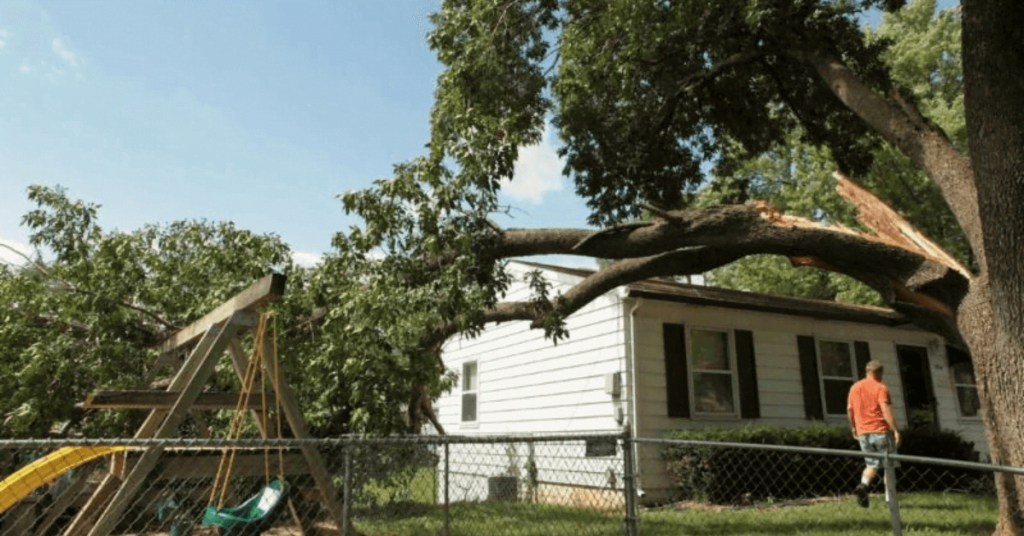Are you a homeowner looking to give your property landscaping an overhaul? Have you recently decided it might be time to trim your oak tree, but are unsure how to do this while ensuring your beloved plant’s health and vitality? Trimming an oak tree can seem daunting, as oaks are known for their vast size, age-old strength and endurance.
Read on for valuable tips on how to effectively trim an oak without damaging its roots or killing it and enjoy the reward of displaying a beautiful specimen in all its glory!
Oak Tree Trimming (Process & Tips)
Trimming an oak tree can help maintain its appearance and health. However, it is important to remember that oaks are sensitive to drastic changes and improper pruning techniques can cause serious damage and even death.
Here are some tips for trimming an oak tree without killing it:
1) Prune in moderation
Oak trees are accustomed to growing naturally and may not respond well to excessive pruning. It is best practice to avoid removing more than a quarter of the tree’s total canopy growth each year.
2) Prune at the right time
Pruning oak trees should only be done during their dormant season, typically in late winter or early spring. Pruning later in the year could damage its new growth.
3) Choose pruning techniques wisely
When removing branches from an oak tree, it is important to make sure that the cut is made properly. Make sure that all cuts are just beyond the branch collar and angle them slightly away from the trunk so that water can run off the tree and not sit in the cuts.
4) Clean up debris afterward
After pruning, it is important to clean up any debris from the ground around your tree as soon as possible. Fallen branches and leaves can harbor disease or pests that may cause damage to the roots of your oak tree.
Following these tips will help ensure you can trim your oak tree without killing it.
What type of oak tree do you have and what is its purpose?
The type of oak tree that you have will depend on your location. In the United States, there are two main types: red oaks and white oaks. Red oaks tend to grow more in the Eastern and Central U.S., while white oaks are more common in the West and South.
Oak trees can be used for both ornamental and practical purposes. Ornamental oak trees can provide aesthetic value to a landscape, while practical oak trees can be planted for shade or as windbreaks. Both white oaks and red oaks are suitable for these purposes, however, some varieties of white oaks may be better suited to providing shade than others. It is important to research the type of oak tree that is best suited to your needs before planting it.
Oak trees are also a great source of food for wildlife, with both their acorns and leaves providing nutrition for birds and other animals. Therefore, if you choose to plant an ornamental or practical oak tree in your yard, you will also be helping to support local wildlife.
What tools do you need to trim an oak tree without killing it?
You will need the following tools to trim an oak tree without killing it:
- Pruning Shears: These are used for small branches and twigs. They have sharp blades that easily cut through wood.
- Loppers: These are like large scissors and are ideal for thicker branches up to 1 inch in diameter.
- Pruning Saw: This is used for branches that are too thick for pruning shears or loppers. It has a curved, sharp blade that can easily cut through wood.
- Hedge Shears: These are used for shaping and trimming the tops of oak trees. They have long, curved blades that allow you to create perfect shapes.
- Pole Pruner: This tool is used to reach higher branches that can’t be accessed with a regular saw or pruners. It has an extendable pole and a sharp blade at the end.
- Safety Gear: When trimming trees always wear safety gear such as eye protection, gloves and sturdy shoes. This will help protect you from any falling debris or sharp branches.
It is also important to always use the right tools for the job and make sure they are in good condition before using them.
How often should you trim an oak tree to avoid killing it?
It is generally recommended to trim an oak tree every three to five years. Pruning should be done selectively and judiciously, focusing on removing dead or diseased branches and those that may have grown too close together. Before you start pruning, it’s also important to assess the overall health of the tree since weakened trees can be more susceptible to disease or pest infestations.
It’s also important to note that oak trees with multiple trunks should not be pruned, as this can cause additional stress on the tree and reduce its overall lifespan. Additionally, avoid cutting away too much foliage at once, as this can shock the tree and leave it vulnerable to disease or pests.
Finally, it’s also important to note that oak trees can respond differently to pruning depending on the region they are located in and the species of tree. It is always best to consult an expert arborist before trimming an oak tree.
Are there any risks associated with trimming an oak tree?
Yes, there are risks associated with trimming an oak tree. The most common risks are injury from falling branches or slipping on wet leaves, damage to the trunk and branches of the tree and changes in direction of growth due to incorrect pruning techniques.
In addition, improper trimming can lead to diseases such as root rot or canker. If you are not experienced in trimming oak trees, it is best to consult with a certified arborist before attempting any work.
An arborist can help determine the best way to prune or remove branches without damaging the tree.
Overall, it is important to understand the risks involved with trimming an oak tree before attempting any work. Consulting with an experienced arborist and taking all necessary precautions can help reduce the risks associated with pruning or removing branches.
FAQs – Trim an Oak tree without killing it
What time of year is best to trim oak trees?
The best time to trim oak trees depends on the species of oak and your climate. Generally, oaks are trimmed in late winter or early spring before new growth begins. In some areas, such as those with hot summers, oaks may be trimmed in late summer or even fall so that they will remain healthy throughout the winter months.
Be sure to research your specific oak species and local climate conditions to determine the best time for trimming. Additionally, always seek professional advice before pruning a large or valuable tree.
What happens when you cut the top off an oak tree?
When the top of an oak tree is cut off, it will cause extensive damage to the tree. The removal of the entire canopy will eliminate food production through photosynthesis, drastically reduce water movement throughout the tree and disrupt nutrient cycling. This damage can weaken the structure of the tree, leading to splitting and cracking in a weakened trunk or stem.
In some cases, the tree may have difficulty recovering from the loss of its canopy and could eventually die. It is best to avoid cutting the top off an oak tree if possible.
Final Words
With the right guidance, you can trim your oak tree without killing it. By following the tips in this blog post, you will be able to keep your oak tree healthy and looking its best.
You should always call a professional if you are unsure about how to properly trim your tree. With a little care and attention, your oak tree will thrive for years to come.



